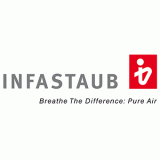
The Technical Regulation TR CU 020/2011 On electromagnetic compatibility sets the minimum requirements for the electromagnetic compatibility of technical devices for the protection of life, health, property and the environment, as well as consumer protection against misleading information.
In accordance with the TR CU 020/2011, the electromagnetic compatibility must be designed and manufactured in such a way that electromagnetic interference is not capable of impairing radios or other devices. The devices themselves must not be susceptible to electromagnetic interference.
Although the requirements of the Technical Regulation TR CU 020/2011 have been coordinated with the requirements of the EU Directive 2014/30/EU On electromagnetic compatibility, they are not identical.
The compliance with the requirements of the Technical Regulation TR CU 020/2011 On electromagnetic compatibility is a prerequisite for successful access to the Russian and Eurasian market.
Adopted on December 9, 2011
Came into force on February 15, 2013
From March 15, 2015, the Technical Regulation TR CU 020/2011 will definitively override the national standards such as GOST or Russian TR. As of this date, TR CU 020/2011 is the only standard in the field of electromagnetic compatibility within the customs union.
Application area of TR CU 020/2011 On electromagnetic compatibility
The Technical Regulation TR CU 020/2011 applies to all devices that can generate electromagnetic interference or to those devices whose functionality is dependent on the influence of external electromagnetic interference.
The Technical Regulation TR CU 020/2011 does not include a ruling on the use of radio frequencies by governments. This is governed exclusively by the national legislation of the member countries of the customs union.
According to TR CU 020/2011 the following products are subject to the EAC Certification:
- household electrical appliances
- personal electronic data processing machines
- devices that can be connected to electronic data processing machines
- electrical tools
- electronic musical instruments
According to TR CU 020/2011 the following devices are subject to the EAC Declaration:
All devices that can cause electromagnetic interference, which are not listed in the list of devices subject to EAC Certification, are subject to the mandatory EAC Declaration according to TR CU 020/2011.
According to TR CU 020/2011 no conformity assessment is needed for devices which are used exclusively as components and are not intended for their own use:
- electromagnetic passive devices
- electric wire
- technical equipment without an automatic switch
- household electric heating without thermostats and fans
- electric batteries and accumulators without active electronic circuits
- headphones and loudspeakers without amplifiers
- high-voltage equipment, in which the electromagnetic interference can only be caused by defective insulation, under the proviso that this equipment does not contain any active switching components
- capacitors
- induction motors
- quartz watches
- light bulbs
- plugs, sockets, fuses, switches without active electronic circuits
- passive antennas for the reception of radio and television broadcasting
We note, whether or not the devices are subject to conformity assessment according to the Technical Regulation TR CU 020/2011, they also might be subject to other directives, such as TR CU 004/2011 On safety of low voltage equipment, TR EAEU 037/2016 On restriction of the use of certain hazardous substances in electrical and electronic equipment, or TR ZU 010/2011 On safety of machinery and equipment.
EAC marking

The products that have been confirmed to conform with the requirements of TR CU 020/2011 are marked with the EAC sign of the customs union. Placing a product on the market without corresponding marking can be punished with a fine or confiscation.
Period of validity of the EAC certificate
The certificate for serial production is valid for 5 years.
TR CU 020/2011 On electromagnetic compatibility in the Russian language



















































